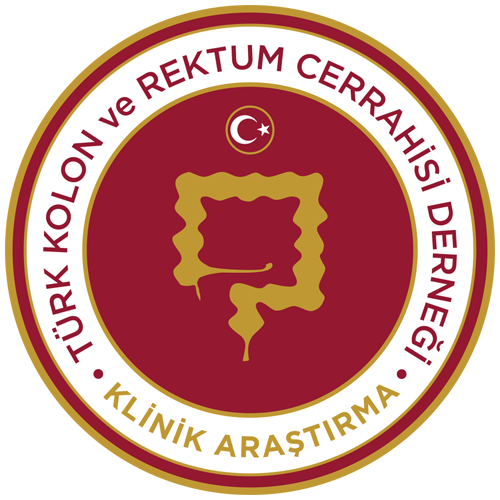Anal Fissür Tedavisinde Lateral İnternal Sfinkterotomi - Fonksiyonel Sonuçlar ve Yaşam Kalitesinin Değerlendirilmesi: Ulusal Prospektif Gözlemsel Çalışması
Çalışma
Anal Fissür Tedavisinde Lateral İnternal Sfinkterotomi - Fonksiyonel Sonuçlar ve Yaşam Kalitesinin Değerlendirilmesi: Ulusal Prospektif Gözlemsel Çalışması
Study
RELIEF Study: Resolving Fissures with Lateral Internal Sphincterotomy - Evaluating Function and Quality of Life: A National, Prospective Cohort Study
Background
Chronic anal fissure is a painful anorectal condition characterized by a linear or oval-shaped tear in the anoderm, primarily located at the posterior midline. Its etiology is often linked to anorectal trauma caused by hard stool, diarrhea, anorectal surgeries, or sexual practices. Surgical treatment, particularly Lateral Internal Sphincterotomy (LIS), is a highly effective option for chronic fissures refractory to medical management. Despite its high success rates, LIS is associated with the risk of postoperative complications such as fecal incontinence. This study aims to evaluate the long-term outcomes of LIS in terms of incontinence, quality of life (QoL), and patient satisfaction.
Study Objectives
Primary Objective:
- To assess the impact of LIS on fecal incontinence one year after surgery, measured by a change in Wexner score (≥2 points).
Secondary Objectives:
- Evaluate changes in quality of life (QoL) metrics, including SF-36, FIQoL, and Hemo-Fiss-QoL.
- Identify risk factors associated with incontinence and recurrence.
- Assess pain relief using the Visual Analog Scale (VAS) at 7-10 days, 3 months, and 12 months.
- Analyze patient satisfaction using a 1–5 scale.
- Measure postoperative anxiety and depression using the Hospital Anxiety and Depression Scale (HADS).
Study Design
Type: Prospective, multicenter cohort study
Duration: June 1, 2025 – May 31, 2026
Ethics Approval: Gazi University Ethics Committee
Registry: ClinicalTrials.gov (Trial ID: TBD)
Data Collection: Electronic data capture using REDCap
Eligibility Criteria
Inclusion Criteria:
- Adults aged ≥18 years diagnosed with chronic anal fissure (symptoms >6 weeks).
- Decision for LIS surgery made by the treating physician.
Exclusion Criteria:
- Patients with other perianal/rectal diseases (e.g., fistula, abscess, IBD).
- History of anal surgery or pelvic radiation.
- Inability to comprehend study-related forms.
Endpoints
Primary Endpoint:
- Proportion of patients with a clinically significant change in Wexner score (≥2 points) at 12 months postoperatively.
Secondary Endpoints:
- Risk factors for worsening incontinence.
- Recurrence rates and associated risk factors.
- Changes in VAS for pain at 7-10 days, 3 months, and 12 months.
- QoL improvements measured by SF-36, FIQoL, and Hemo-Fiss-QoL.
- Patient satisfaction scores (1–5 scale).
- Postoperative anxiety and depression levels assessed by HADS.
Methodology
Preoperative Data Collection:
- Patient demographics, fissure characteristics, and prior treatments.
Surgical Data Collection:
- LIS technique: Open vs. closed; extent of sphincterotomy (to fissure apex, tailored, or spasm-controlled using anal calibrators).
- Additional procedures: Sentinel pile removal, fissurectomy.
- Surgeon experience.
Postoperative Follow-Up:
- 7-10 days: VAS for pain and HADS for psychological assessment.
- 3 months: QoL metrics, recurrence, complications, and intermediate-term HADS evaluation.
- 12 months: Wexner score, QoL metrics, patient satisfaction, recurrence, and long-term HADS evaluation.
Patient-Reported Outcomes:
- VAS for pain (7-10 days, 3 months, 12 months).
- Cleveland Clinic Incontinence Score (Wexner).
- FIQoL, Hemo-Fiss-QoL, and SF-36 for QoL metrics.
- HADS for psychological evaluation.
Statistical Analysis Plan
Primary Analysis:
- Logistic regression for change in Wexner score, adjusted for covariates (age, gender, baseline sphincter integrity).
Secondary Analysis:
- Repeated measures ANOVA for VAS and QoL metrics.
- Kaplan-Meier survival analysis for recurrence-free survival.
- Cox proportional hazards model to identify recurrence risk factors.
Subgroup Analyses:
- Gender-specific outcomes.
- Tailored vs. traditional LIS.
- Junior vs. senior surgeons.
Sample Size:
- Approximately 300 patients (150 per group) to detect a 10% difference in incontinence rates (control: 10%, intervention: 5%) with 80% power and α=0.05.
Challenges and Innovations
Extent of Sphincterotomy: Comparing tailored, fissure-apex, and spasm-controlled LIS techniques.
Risk Mitigation: Identifying predictors of incontinence and refining surgical strategies.
Patient-Centered Metrics: Incorporating validated PROMs for comprehensive outcome evaluation.
Psychosocial Impact: Assessing anxiety and depression to address holistic patient wellbeing.
Guideline Development: Using findings to develop evidence-based LIS guidelines.
Funding and Support
Primary funding: TKRCD Scientific Research Projects.
Additional Documents
Research Ethics Committee Approval
Contact
Study Secretary: Uzm. Dr. Ender Ergüder
Phone: +90 505 391 2170
E-Mail: endererguder93@gmail.com
Researcher in Charge: Prof. Dr. Sezai Leventoğlu
Phone: +90 532 446 15 22
E-Mail: sezaileventoglu@hotmail.com
Telif Hakkı © 2025 TKRCD. Tüm hakları saklıdır. | Powered by MMA

